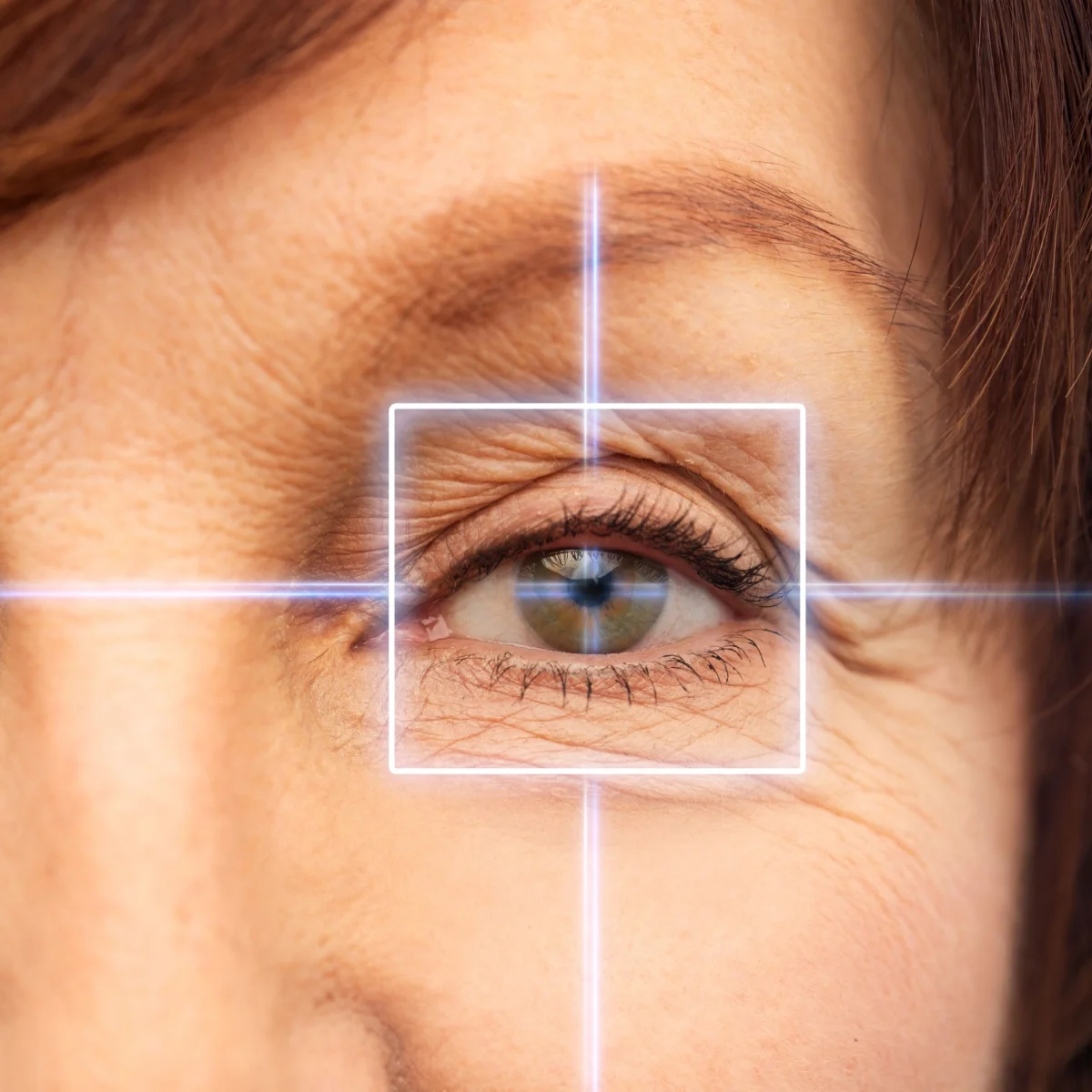
Presbyopia
Presbyopia is a visual problem of middle age, a normal part of the aging process, during which the eyes gradually lose the ability to focus at a close range. It occurs when the lens of the eye loses its flexibility, causing objects that are near to appear blurry.
Symptoms take years to develop and most patients begin to show signs of presbyopia in their early-to-mid 40s. Typically, the condition worsens until about age 65. Presbyopia is diagnosed with a routine eye examination and can be treated with corrective lenses or surgery.

Causes of Presbyopia
Presbyopia is part of the aging process where the natural lens of the eye becomes thicker and less flexible. With this loss of flexibility, it becomes more difficult for the lens to focus on objects that are close. In young eyes, the lens is flexible enough to change shape, assisted by the circular muscle around it. When focusing on a distant object, the muscle relaxes; when focusing on a near object, the muscle constricts. As the lens of the eye hardens with aging, however, it becomes less flexible and unable to change shape for nearby images. As a result, close objects appear blurred.

Symptoms of Presbyopia
As patients develop presbyopia, they may become aware of the following symptoms:
- Blurred vision when reading
- Eyestrain or eye fatigue
- Headaches that occur with close work
One of the first signs of presbyopia is the need to hold reading materials at a distance in order to obtain clear focus. Symptoms of presbyopia tend to worsen in dim lighting, when the eyes are tired, or when alcohol has been consumed.
Diagnosis of Presbyopia
After a thorough medical examination of the eyes, the physician will conduct one or more of the following tests to confirm diagnosis of presbyopia:
- Visual acuity
- Retinal examination
- Refraction test
- Slit-lamp test
Although presbyopia cannot be cured, once the diagnosis has been confirmed, the condition can be easily treated.
Treatment of Presbyopia
Treatment of presbyopia is designed to help patients focus clearly on nearby objects. This can be accomplished nonsurgically or with a surgical procedure.
Nonsurgical Correction of Presbyopia
Presbyopia can be easily addressed by getting one of the following types of corrective lenses:
- Reading glasses
- Bifocal or trifocal eyeglasses
- Progressive eyeglasses
- Multifocal contact lenses
- Monovision contact lenses
Corrective eyeglasses are available over-the-counter for simple, more minor corrections: from 1.00 diopter to 3.00 diopter. Patients who require greater correction for near vision, or who also have farsightedness or astigmatism, will require prescription lenses.
Monovision contact lenses, to which most, but not all, patients can adjust, correct for distance vision in one eye and close vision in the other.

Surgical Correction of Presbyopia
There are several methods to treat presbyopia with surgery. These include:
- Refractive surgery, such as keratoplasty (CK) or laser surgery
- Intraocular lens implants or IOLs
- Corneal inlays
Patients should be aware that any surgical procedure carries some risk and that most eye surgeries are not reversible.
Presbyopia is part of the normal aging process and, though at times troublesome and annoying, can fortunately be effectively treated in a number of ways.

Schedule Your Appointment at Cincinnati Eye Institute
The doctors at Cincinnati Eye Institute have either authored or reviewed the content on this site.



